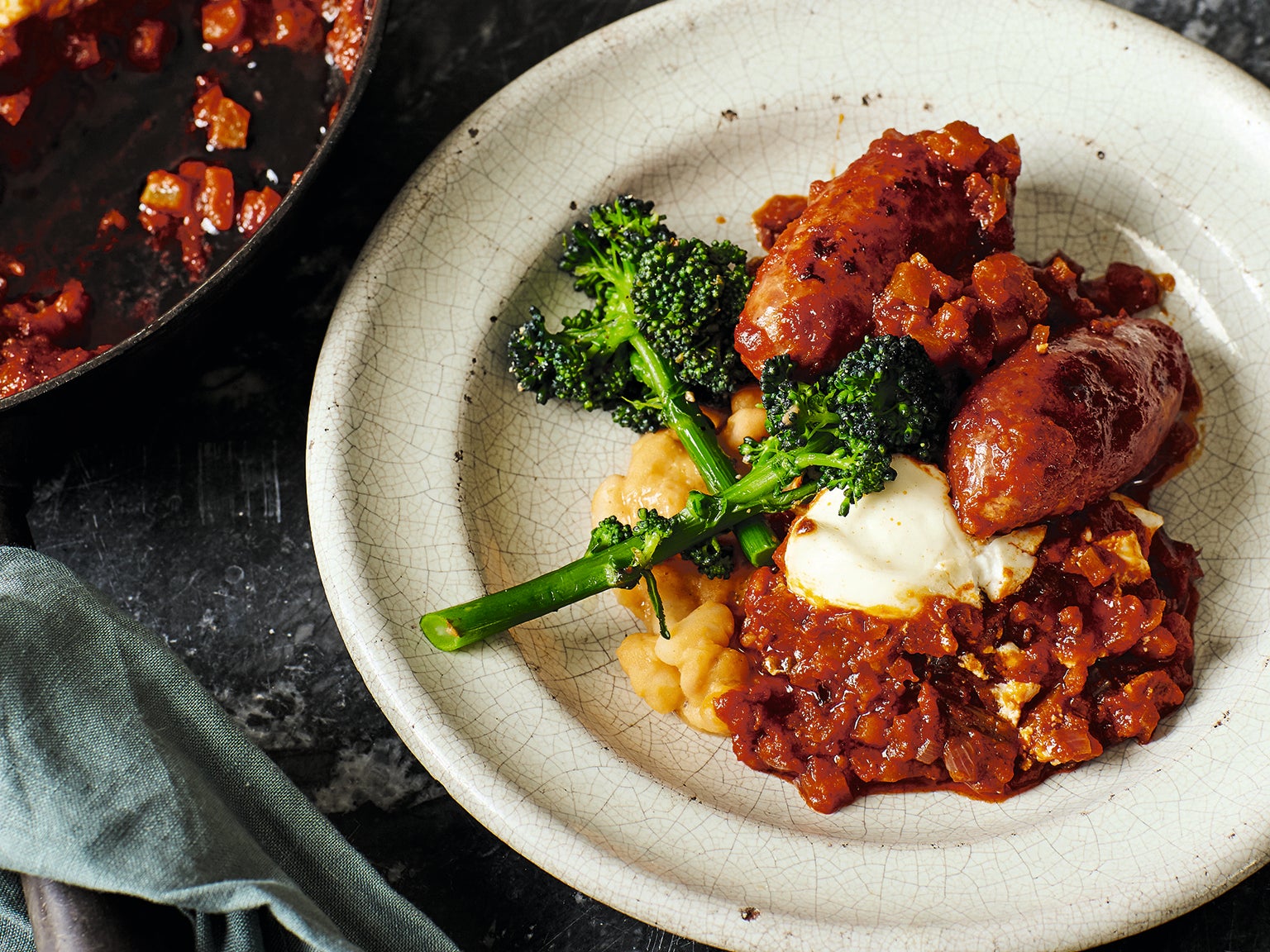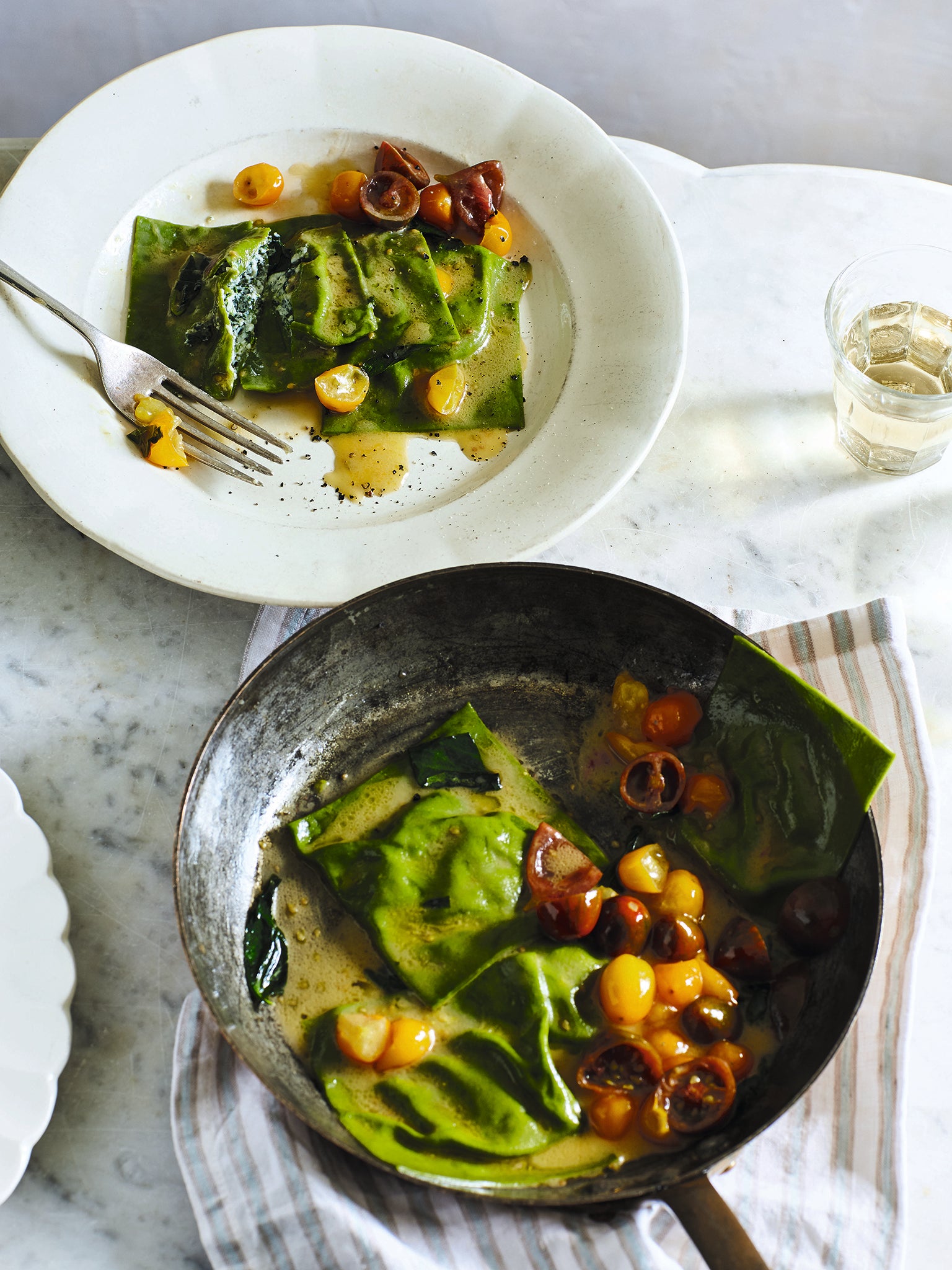3 authentic Italian recipes straight from the pantry
You don’t need fancy ingredients to make real Italian grub – all the essentials can probably be found in your store cupboard already

Wherever you are in the world, head to your local supermarket, and you will most likely be able to find a treasure trove of Italian deli staples, from pastas to pulses, cured meats to smoked fish, jarred vegetables, cheese and wine. The very best of Italian produce, at your fingertips.
Enter, the Italian Deli Cookbook by River Cafe alumnus Theo Randall. With original, simple recipes, the internationally renowned chef shows you how to take these store-bought yet transformative ingredients into easy lunches, suppers and dinner party centrepieces.
Tapping into the world of pantry cooking – using high quality preserved ingredients as the basis for simple recipes – has never been easier.
If handmade pasta, fragrant Italian sausage and moreish frittata tickles your fancy, here’s three recipes from the book to get you started.
Rocket and ricotta green ravioli with tomatoes and butter

There’s something distinctly fresh and summery about green pasta. Blanching the herbs for the filling keeps their vibrant colour and brings out their flavour. (If you just add raw chopped herbs to the ricotta mixture, you end up with a bitter, oxidised filling.) Ravioli is the easiest stuffed pasta to make; a good one to perfect before you attempt cappelletti, tortellini or agnolotti. If you want to buy a pasta machine, Imperia is the best brand. Clamp the machine to your worktop, and when you shape your pasta, do so on a large chopping board or wooden table top – the texture will give you a little purchase.
Ingredients
For the pasta dough
- 350g tipo 00 flour
- 25g fine semolina flour, plus extra for dusting
- 1 organic egg
- 4 organic egg yolks
- 50g fresh spinach
For the filling
- 80g wild rocket
- 50g basil leaves
- 50g flat-leaf parsley
- 500g ricotta
- 100g parmesan, finely grated, plus extra to serve
- Pinch of freshly grated nutmeg
- Sea salt and freshly ground
- Black pepper
To serve
- 50g unsalted butter
- 200g datterini (baby plum) or cherry tomatoes, halved
- 4 basil leaves
Method
Bring a pan of salted water to the boil. Boil the spinach for 2 minutes, until the stalks are tender. Drain in a colander and push out any residual liquid with the back of a spoon. When the spinach has cooled, squeeze it with your hands until just damp. Roughly chop.
Place all the ingredients for the pasta dough in a food processor. Pulse for 3 minutes until all the ingredients have turned into lots of small balls. If the dough seems too dry, add 1tbsp of water and blend again.
Tip the contents of the processor into a bowl and squeeze the dough together, moulding it into a big ball. Divide the ball into 4, wrap each one in cling film (plastic wrap) and place in the fridge for 30 minutes to rest.
Meanwhile, make the filling. Bring a pan of salted water to the boil and blanch the rocket, basil and parsley for 1 minute. Drain and leave to cool.
When the herbs and rocket have cooled, place them in a clean cloth and squeeze out the moisture. Chop them finely and transfer them to a mixing bowl. Add the ricotta, parmesan and nutmeg and season with salt and pepper. Mix thoroughly, then set aside.
One piece of pasta at a time, roll out the dough a little until it will fit through your pasta machine. Starting with the machine on the widest setting, roll out the dough through the machine, then fold it in half and roll it again. Repeat this process 4 times for each quarter of pasta – it makes the pasta more elastic, so it will be much more durable. Then, roll each piece through the machine several times, getting thinner each time until it has been through the thinnest setting.
Transfer the filling to a piping bag fitted with a large plain nozzle (or simply use a teaspoon). Place 1 sheet of pasta on a work surface lightly dusted with semolina flour to prevent sticking. Work along the sheet, placing blobs of mixture along its length with a 2-finger gap in between each portion. Try to position the blobs in the upper half of the pasta strip so that you have space to fold the pasta over them. Using a pastry brush, brush water in between the portions of filling and on the edge of the pasta. Fold the pasta sheet over the filling, and use your fingertips to push down and seal to create little individual parcels. Cup your hand and push down on the ravioli to remove any unwanted air pockets.
Using a sharp knife, cut between each mound to create your individual ravioli. Place each raviolo on a tray dusted with semolina flour to prevent sticking. Repeat for all the pasta sheets and filling, then set aside for 1 hour before cooking.
When you’re ready to serve, melt the butter in a large, non-stick frying pan over a low heat. Add the tomatoes and tear in the basil. Cook for about 3 minutes, until the tomatoes collapse and become slightly sticky.
Leave to one side to keep warm. Bring a large pan of salted water to the boil. Add all the ravioli, dropping them in one by one, and cook for about 3 minutes. Using a slotted spoon, carefully remove the ravioli and add them to the pan with the tomatoes, butter and basil. Add a ladleful of the cooking water and swirl the pan to coat the pasta in the sauce. Serve immediately on warmed plates, sprinkled with parmesan and black pepper.
Roasted Italian sausages with borlotti beans and ’nduja sauce

Dried borlotti beans from the protected area of Lamon, in the Veneto, are the finest dried borlottis available. You don’t have to use these specifically, of course, but if you are lucky enough to come across a packet, you are in for a treat. Combined with lovely, flavoursome sausage and the spiciness of ’nduja, they are heavenly. Make sure you have a good bottle of chianti, or other super-Tuscan red wine to drink alongside – it’s essential.
Serves 2
Ingredients
- 250g dried borlotti beans, soaked overnight in plenty of cold water
- 2 garlic cloves,1 whole,1 finely sliced
- 1 plum tomato
- 2-3 sage leaves
- 3tbsp olive oil
- 4 Italian sausages
- 2 celery sticks, finely chopped
- 1 red onion, finely chopped
- 2 carrots, peeled and finely chopped
- 100ml red wine
- 400g tomato passata
- 75g skinned ’nduja
- 2tbsp mascarpone
- Sea salt and freshly ground black pepper
- 200g purple-sprouting, calabrese or long-stem broccoli, cooked and seasoned with olive oil and sea salt and freshly ground black pepper, to serve
Method
Drain the soaked beans and rinse under cold, running water for a couple of minutes. Place the rinsed beans in a large saucepan and pour in cold water so that the water comes 10cm above the level of the beans. Add the whole clove of garlic, along with the plum tomato and sage leaves. Place over a high heat and bring to the boil. Reduce the heat to a simmer and cook gently for 40 minutes, skimming off the foam from time to time, until the beans are soft enough to crush to a mash with your thumb. Drain the beans, reserving the cooking water. Remove the tomato, sage and garlic and place them in a bowl. Using a handheld stick blender and a little of the bean cooking water, blend to a smooth paste. Add the paste back to the beans and check the seasoning. Set aside.
Preheat the oven to 160C/140C fan/gas mark 2-3. Heat 2tbsps of olive oil in an ovenproof frying pan on a medium heat. When hot, add the sausages and cook for 5 minutes, turning frequently, until brown all over. Remove them from the pan and set aside, leaving the sausage fat and olive oil in the pan.
Add the celery, sliced garlic, onion and carrots to the pan and cook gently for 5 minutes, until the onion has softened. Add the red wine and cook for a further 2 minutes until the liquid has reduced by half. Add the passata, cook gently for a couple of minutes, then add the ’nduja and stir well.
Place the sausages on top of the passata mixture and bake in the oven for 15 minutes, until the sausages are cooked through. Remove from the oven, dollop over the mascarpone and check the seasoning. Warm the cooked borlotti beans and stir through the remaining olive oil. Place on the table for everyone to help themselves, with some steaming hot purple sprouting broccoli served alongside.
Black truffle frittata with chestnut mushrooms, ricotta and spinach

You can serve this frittata hot or cold – try cutting it into small pieces to serve as a canape. The truffle is optional, but it really does elevate the dish.
Serves 4
Ingredients
- 3 tbsp olive oil
- 500g (1lb 2oz) chestnut mushrooms, cut into 5mm (¼in) slices
- 1 garlic clove, finely sliced
- ½ tsp thyme leaves (not lemon thyme)
- Juice of ½ unwaxed lemon
- 1tbsp chopped flat-leaf parsley
- 500g (1lb 2oz) spinach leaves
- 8 organic eggs, well beaten
- 2tbsp whole milk
- 100g parmesan, finely grated
- 150g ricotta
- Sea salt and freshly ground black pepper
- Black truffle shavings, to serve
For the lamb’s lettuce with shallot and vinegar dressing (to serve)
- 1 small shallot, finely chopped
- 2tbsps red wine vinegar
- 3tbsp good olive oil
- 100g lamb’s lettuce
Method
Begin the side salad. Mix the shallot with the vinegar, season with salt and pepper and set aside for 20 minutes. Meanwhile, preheat the oven 210C/190C fan/gas mark 6-7.

Heat 2tbsps of the olive oil in a large, ovenproof non-stick frying pan. When hot, add the mushrooms, garlic and thyme, and season with salt. Cook gently for 10 minutes, until the mushroom liquid has released and evaporated. Add the lemon juice and parsley then transfer to a bowl.
Wipe out the frying pan with some kitchen paper and return it to a medium heat. Add ½ cup of water and the spinach. Stir for a couple of minutes until cooked, then transfer to a colander and press the spinach with the back of a spoon to push out the excess water. Squeeze in a clean cloth to almost dry, then roughly chop. Place in the bowl with the mushrooms. Wipe the pan again, and place back on the heat.
Combine the eggs and milk in a large bowl and add the mushrooms, spinach, parmesan and ricotta, then season. Add the remaining olive oil to the pan and pour in the egg mixture. Once the edges start to set, give the pan a shake and place in the oven for about 4 minutes, until the centre of the frittata is firm. Remove from the oven and carefully invert the frittata onto a plate. Sprinkle over a generous amount of black truffle shavings. Add the olive oil to the shallot and vinegar to make a dressing for the lamb’s lettuce. Serve alongside the frittata.
‘The Italian Deli Cookbook’ by Theo Randall (Quadrille, £26) Photography by Lizzie Mayson


Join our commenting forum
Join thought-provoking conversations, follow other Independent readers and see their replies
Comments